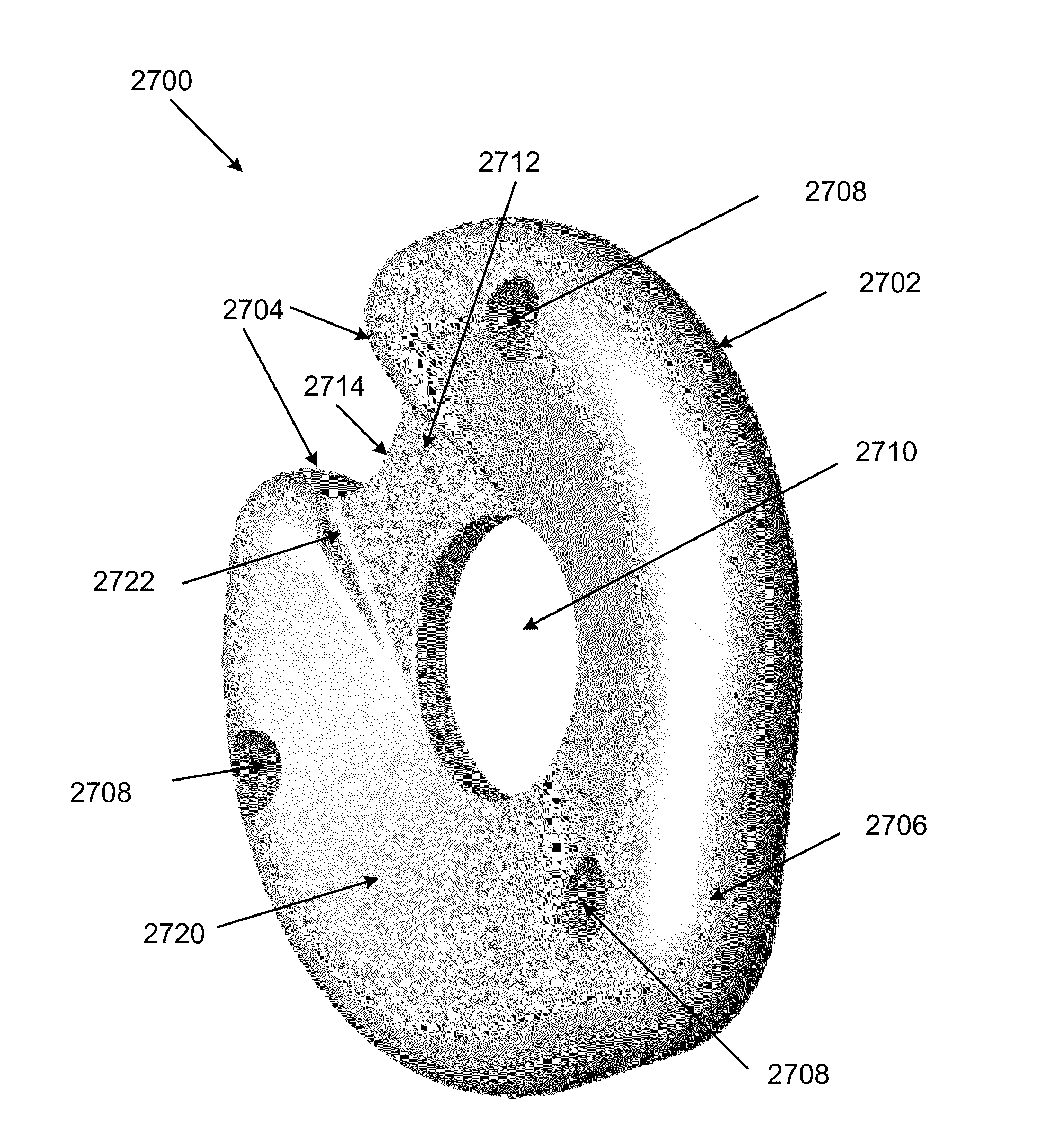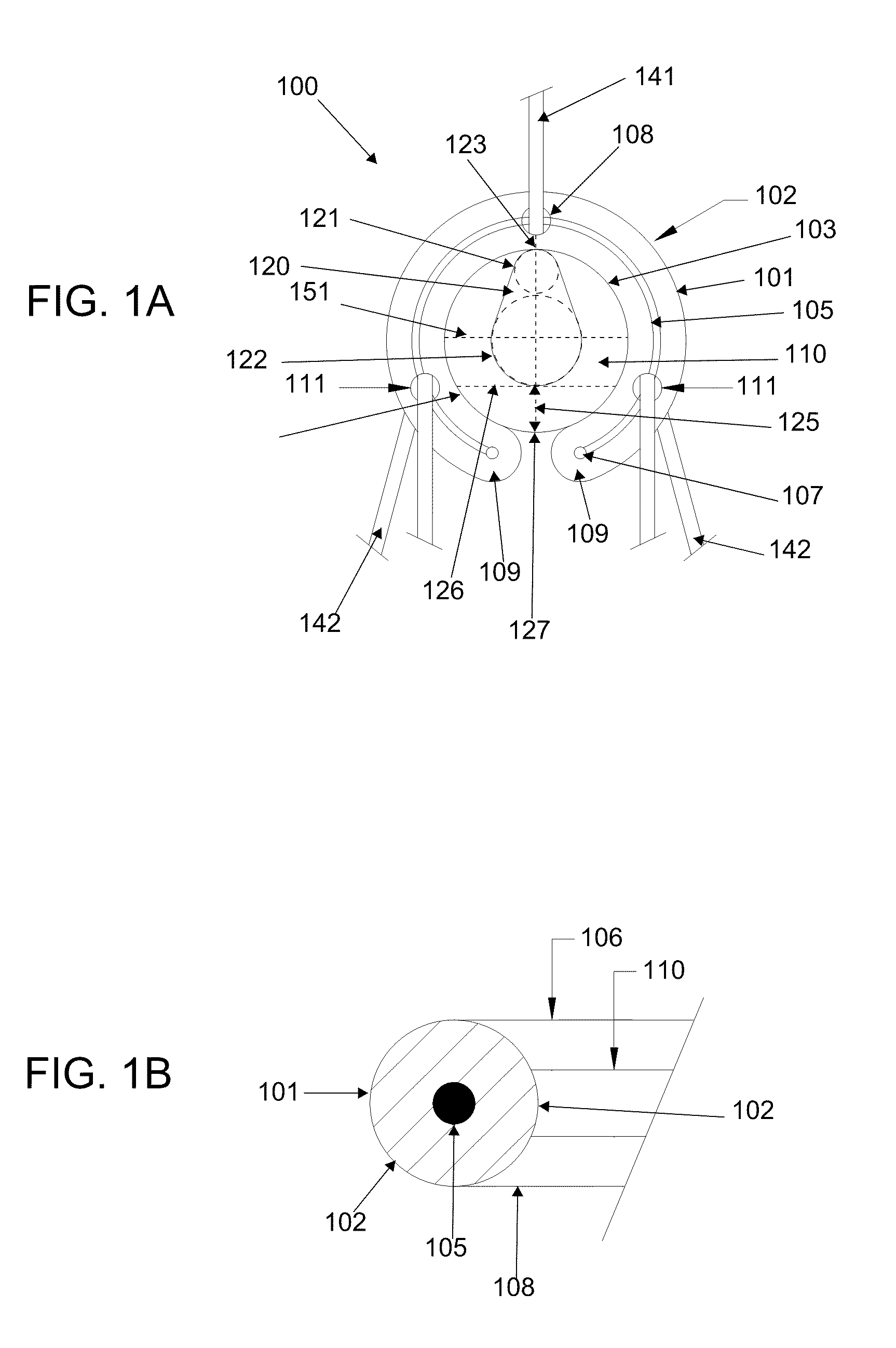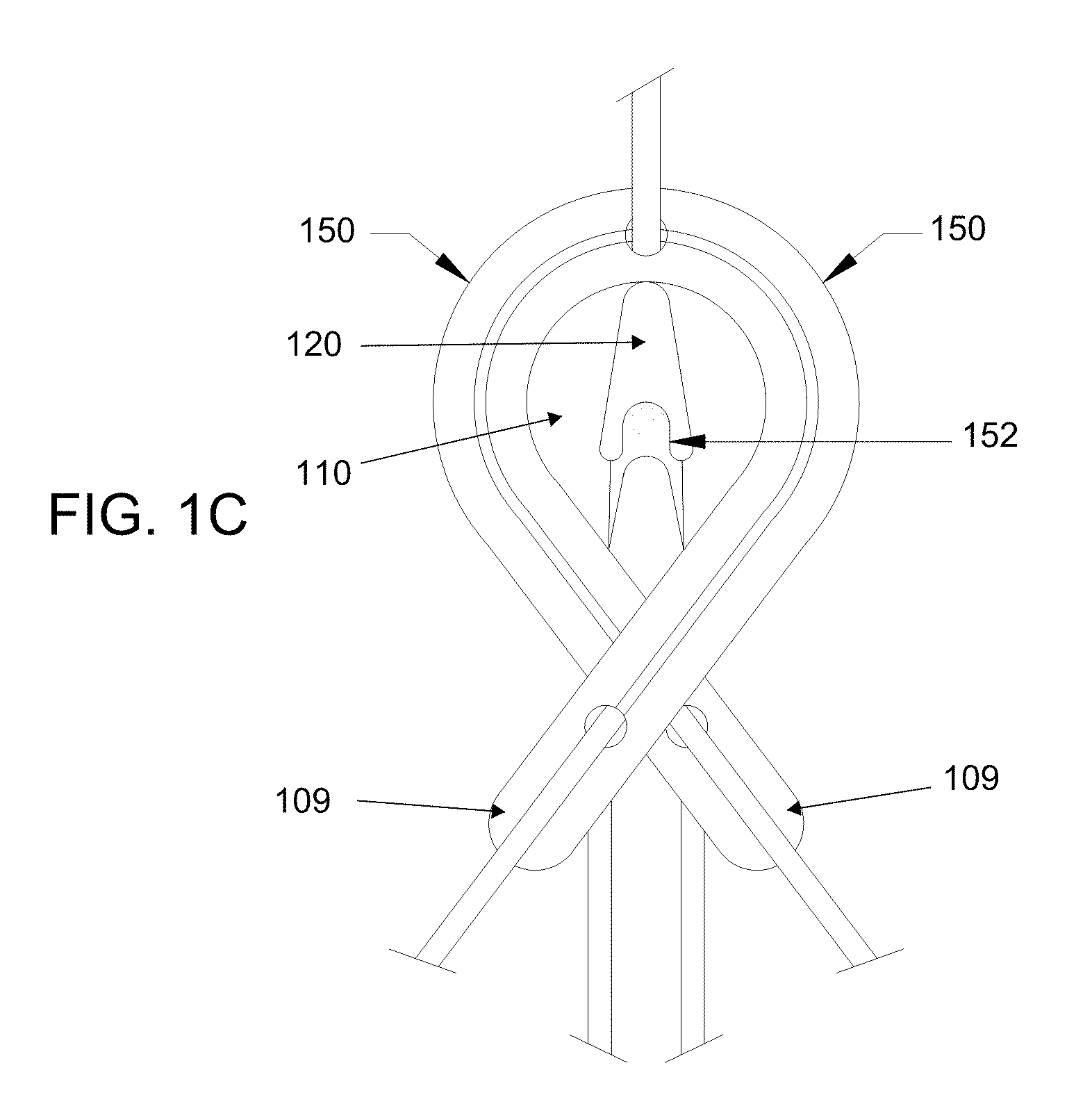Disc-shaped orthopedic devices
a disc-shaped, orthopedic technology, applied in the field of disc-shaped orthopedic devices, can solve the problems of joint stiffness, moderate to severe pain, drug users may also be subject to serious side effects and risks, and achieve the effect of minimizing the invasive impact on tissue and/or bon
- Summary
- Abstract
- Description
- Claims
- Application Information
AI Technical Summary
Benefits of technology
Problems solved by technology
Method used
Image
Examples
Embodiment Construction
[0063]As should be understood in view of the following detailed description, the exemplary embodiments are generally directed to systems and methods for minimally-invasive treatment of joints, in both medical and veterinary settings (including both small and large animal veterinary medicine). Joints contemplated for various embodiments of the orthopedic systems and methods include, but are not limited to, hands (fingers and thumbs, between phalanges, metacarpals and / or carpals), feet (in the toes, between phalanges, metatarsals and / or tarsals), wrists, elbows, shoulders, knees, hips, and the spine (particularly at the neck and lower back). In some embodiments, an orthopedic device comprises a shape memory body that is inserted into the joint space, which may restore proper joint alignment and joint mobility affected by degenerative processes. In some embodiments, the orthopedic device has a generally arcuate or rectilinear configuration, which may enhance self-centering or self-posi...
PUM
 Login to View More
Login to View More Abstract
Description
Claims
Application Information
 Login to View More
Login to View More - R&D
- Intellectual Property
- Life Sciences
- Materials
- Tech Scout
- Unparalleled Data Quality
- Higher Quality Content
- 60% Fewer Hallucinations
Browse by: Latest US Patents, China's latest patents, Technical Efficacy Thesaurus, Application Domain, Technology Topic, Popular Technical Reports.
© 2025 PatSnap. All rights reserved.Legal|Privacy policy|Modern Slavery Act Transparency Statement|Sitemap|About US| Contact US: help@patsnap.com



